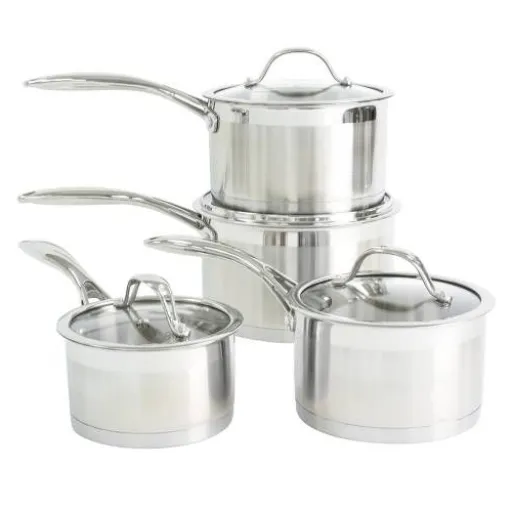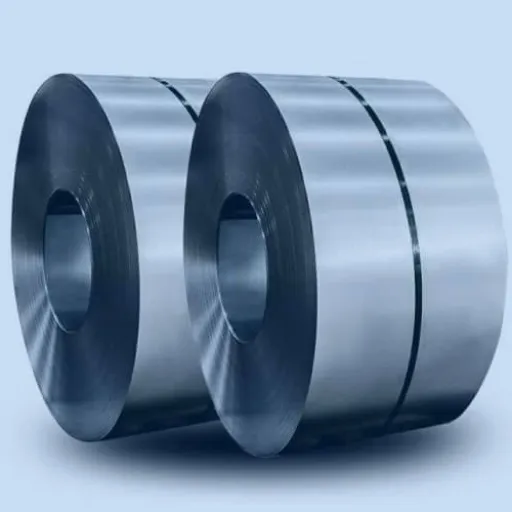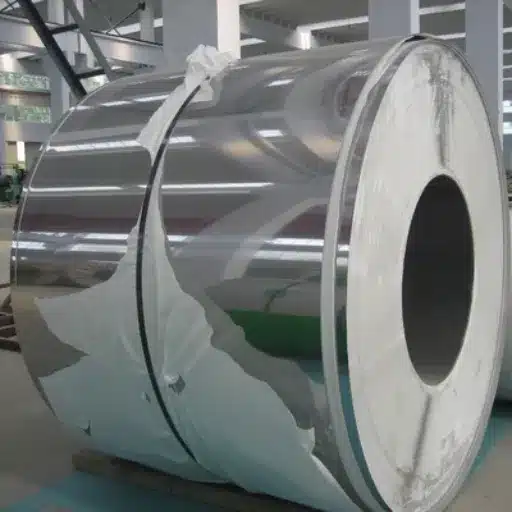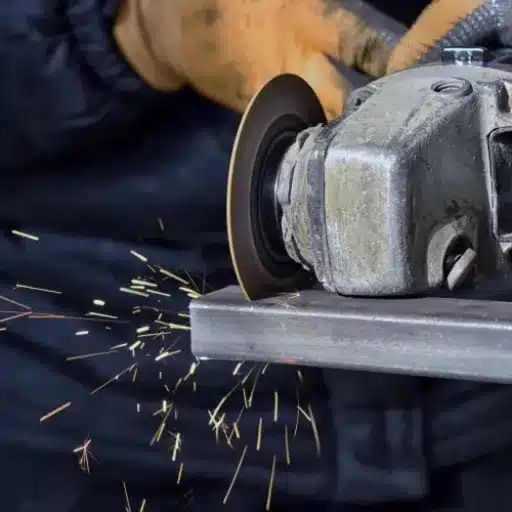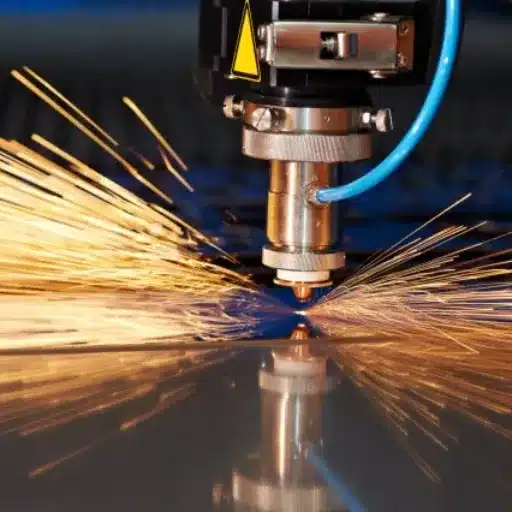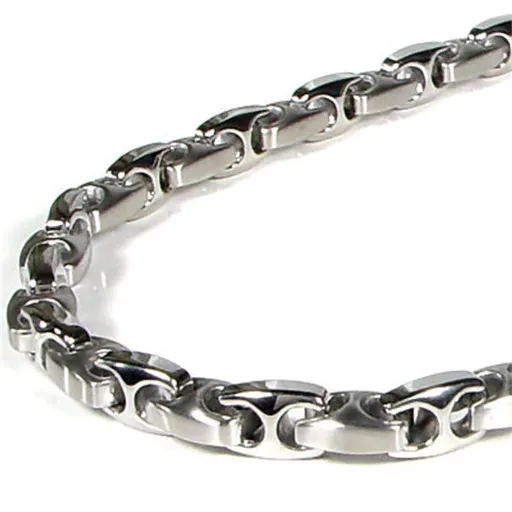The selection of the appropriate stainless steel for your cookware and flatware might be a real headache, especially when you often hear about 18/0, 18/8, and 18/10. What those numbers stand for and what their implications are on the durability, appearance, and performance of your kitchen essentials? This blog will reveal the truth about these classifications, making you aware of their implications and helping you to choose wisely for your home. Whether you are after daily use flatware or premium-grade cookware, we will be unpacking the distinctions, the advantages, and the suitable applications of each type so that you can have the confidence to pick the stainless steel that matches your requirements the best. Therefore, continue reading to uncover what is behind the numbers and escalate your kitchen knowledge!
Introduction to Stainless Steel
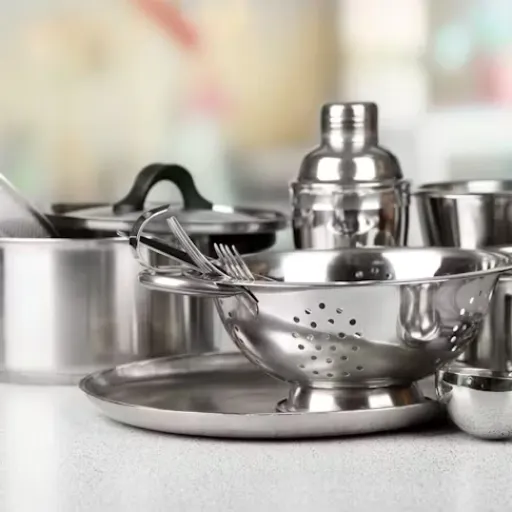
What is Stainless Steel?
Primarily, stainless steel is an alloy built up of iron and carbon, along with chromium, nickel, molybdenum, and manganese, which are added to the alloy for better features. The main reason that stainless steel is different from other types of steel is the fact that it doesn’t get corroded and rusty which is the result of a minimum of 10.5%. In this case, when the chromium gets in contact with oxygen, it reacts to produce a passive layer of chromium oxide over the surface, which in turn protects the material from getting oxidized and deteriorating.
The stainless steel is further divided into different grades and types according to its composition and properties. For instance, the 304 stainless steel, which is often called “18/8” because of its 18% chromium and 8% nickel content, is very good in terms of corrosion resistance and is very versatile. On the contrary, 316 stainless steel, which has the addition of molybdenum, is even stronger and more durable to extreme conditions like marine water or chemicals.
Importance of Stainless Steel in Cookware And Flatware
Stainless steel has a list of great features such as long life, resistance to rust, and elegant look that make it the main material in cookware and flatware. It has a good heating spreading and holding ability, which makes it a nice pick for the making of cooking vessels like pots, pans and so on. This means that the food will be cooked evenly, which is very important for getting the desired outcome every time. Plus, stainless steel which is non-reactive does not change the taste of acid or alkaline foods, thus working great with most food recipes.
Newly released market data demonstrates that the usage of stainless steel in kitchenware is quite widespread. The reports of the industry have stated that the global market for stainless steel cookware was valued at more than $14 billion in the year 2021 and it is predicted to have a compound annual growth rate (CAGR) of 6.14% from 2022 to 2030, due to the fact that there is a rising customer preference for kitchenware that lasts long and durable. The stainless steel flatware still reigns over household and commercial use because of its trait of being both functional and beautiful. The 18/10 or 304 stainless, that is the premium grade stainless steel, is generally used in the making of high-class cutlery, which gives a shiny finish that is resistant to rust and that retains its quality when it comes to appearance.
Understanding Different Types of Stainless Steel

Composition of 18/8 vs 18/10 Stainless Steel
Stainless steel is classified according to its composition, mainly the amounts of chromium and nickel present. The terms “18/8” and “18/10” represent the percentages of chromium and nickel, respectively, in the alloy. In both cases, the chromium percentage is 18%, which is the main reason for the corrosion resistance and the durability enhancement. The nickeling is the point of distinction—8% is the amount of nickel in 18/8 stainless steel while 10% is in 18/10.
The nickel’s higher percentage in 18/10 stainless steel leads to its being partly boardier against rust and tarnishing than 18/8; furthermore, the former’s lifespan is considerably greater due to its strength and ultimate durability. This blend of metals also facilitates 18/10 stainless steel getting a more shiny and polished finish which is also why it’s regarded as luxurious, thus, being often the choice for high-quality flatware and pots. In accordance with the metal industry, both, 18/8 and 18/10 alloys are regarded as food-grade and highly resistant to stain, thereby becoming the best option for daily kitchen and restaurant use. Nonetheless, the superior characteristics of 18/10 stainless steel are generally at a higher price, compared to 18/8 stainless steel that continues to be a widely used cost-effective choice.**
Durability and Strength Comparison
If one resorts to comparing 18/8 and 18/10 stainless steel with respect to durability and strength, both the materials are found to possess excellent resistance to wear and corrosion due to chromium presence in them. The chromium forms a passive layer over the steel to keep it rust-free and damage-free even in high-demand environments. The 18/10 stainless steel in particular, has, with its higher nickel content (10% vs. 8% in 18/8), a slight advantage of durability over time.
Studies assert that the nickel is one of the plus factors contributing to the toughness and ductility of stainless steel which has the ability to endure bending and shaping without getting cracked. For one thing, in the kinetic energy tests, 18/10 stainless steel is always a little ahead of its competitor, enduring a greater level of stress before any visible deformation. Moreover, salt spray testing—a method that simulates lengthy exposure to salty or acidic environments—verifies that 18/10 stainless steel loses its polished look and robust character, although very slightly, slower than 18/8.
Real-World Applications of Stainless Steel
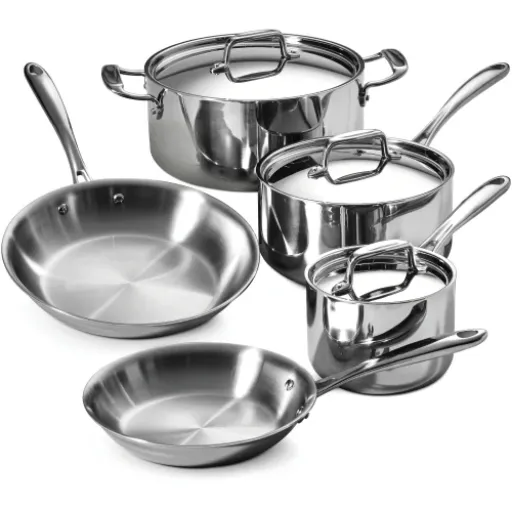
Common Uses in Cookware
Pots and Pans
The pots and pans made of stainless steel are much in demand for their ability to withstand high heat without bending or degrading in nature. The premium ones often come with multi-layered bottoms that have either aluminum or copper as the core so as to provide uniform heat distribution and avoid the formation of hotspots. As per the reports from the industry, pans made of stainless steel are still the preference of the majority and they occupy 40% of the global pan market because of their versatility and durability.
Cutlery and Utensils
Cutlery, consisting of forks, knives, and spoons, as well as kitchen utensils, such as ladles and spatulas, mostly utilize 18/10 stainless steel for better corrosion resistance and luster. The global market for commercial-grade cutlery is still on the rise, mainly due to the non-reactive property of stainless steel, which makes it safe to use when working with acidic or hot foods.
Bakeware
Stainless steel is the material of choice for baking trays, mixing bowls, and even cake molds because of its temperature tolerance and non-corrosive nature. It is also preferred because of its non-porous surface, which makes it easy to clean and help maintain the food safety standards.
Pressure Cookers and Stockpots
The top-grade stainless steel is usually the material of choice for pressure cookers and stockpots because of its ability to withstand the high pressure and high temperature. The brands all over the world use stainless steel in their premium ranges, which in turn keeps its share in about 60% of the annual pressure cooker distribution.
Popular Applications in Flatware and Cutlery
The stainless steel is the material most preferred for flatware and cutlery owing to its durability, resistance to corrosion, and sleek look. The majority of the table knives, forks, and spoons are produced from stainless steel grades like 18/10 (18% chromium and 10% nickel), which assure both strength and a shiny finish. The statistics of the latest surveys indicate that nearly 75% of the total flatware sold across the globe consists of stainless steel as the prime material, which underlines its great acceptance.
Moreover, the producers of cutlery also make use of the flexibility of stainless steel to manufacture the strong and long-lasting blades for the kitchen knives. High-carbon stainless steel is one of the most preferred materials as it provides a good compromise between the retention of the sharpness of the blade and the resistance to discoloration. Besides that, the developments in the knife-making industries, like the application of precision-forged stainless steel, have contributed to raising the standards and the performance of both professional and home knives. The queries show that the Japanese-style knives, which are mostly made from VG-10 stainless steel, are gaining popularity because of the right combination of sharpness and durability.
Expert Opinions on Stainless Steel Grades
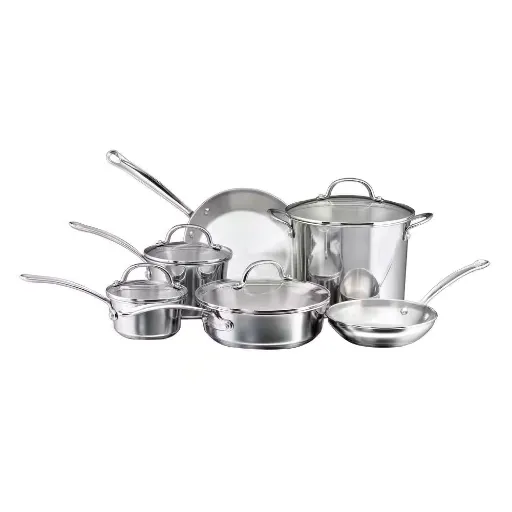
Insights from Industry Professionals
The choice of stainless steel grades largely affects the function and worth of flatware and cutlery, as stated by industry professionals. Material experts and manufacturers share that the 18/10 stainless steel, which consists of 18% chromium and 10% nickel, is one of the most sought after steel grades because of its excellent corrosion resistance and luminous finish, and hence considered as the king steel. 18/0 stainless steel, on the other hand, is a lesser grade that features nickel-free steel, and that is why it is widely accepted by consumers for its economical nature and easy magnetic separation, being the best for apartments with magnetic flatware holders.
The recent market reports suggest that consumers are gradually shifting their preferences from low-quality, low-priced products to the ones that offer durability, design, and cost together. The Grand View Research report puts the global flatware market’s valuation at $12.2 billion by 2028 and predicts the leading segment to be stainless steel flatware due to the trust consumers place in its reliability and maintenance-free nature. Along with that, the demand for eco-friendly and recyclable products has become a reason for the brands to emphasize the sustainability of stainless steel that has become a durable and reusable option for disposables.
Recommendations for Consumers
Household Use
For everyday household use, such as flatware, cookware, or basic kitchen tools, 18/8 stainless steel is often a cost-effective and reliable choice. It offers sufficient corrosion resistance and durability for regular use, striking a balance between quality and affordability. For budget-conscious consumers, 18/8 products deliver excellent performance without compromising functionality.
High-End and Premium Applications
If you prioritize appearance and long-term performance, 18/10 stainless steel is the superior option. Its higher nickel content enhances durability, prevents tarnishing, and provides a polished, luxurious finish. This makes it ideal for premium flatware, fine dining utensils, or professional-grade kitchenware. Data from recent market analyses show that high-end consumers overwhelmingly prefer 18/10 grades due to their premium aesthetic and extended lifespan.
Conclusion
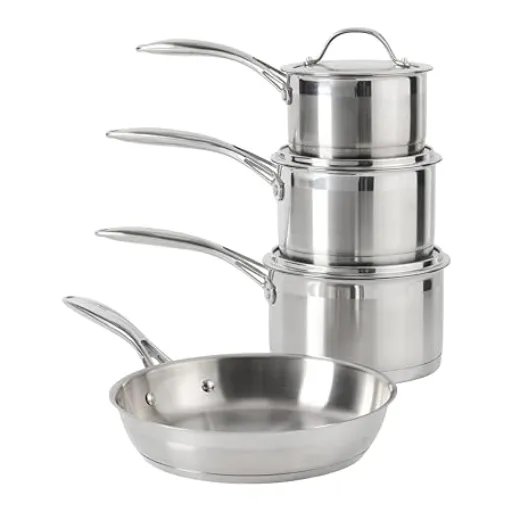
Practical Advice for Choosing Stainless Steel
Understand the Grades
Two of the most widely used grades of stainless steel are 18/8 (304 grade) and 18/10 (316 grade). The digits indicate the amounts of chromium and nickel, with 18 denoting 18% chromium. The addition of nickel, whether 8% or 10%, improves corrosion resistance and gives the metal a longer life. When the material will be in contact with saltwater, acids or other extreme conditions, 18/10 (316 grade) is the best choice due to its superior resistance to corrosion and rust.
Assess Corrosion Resistance
The main component that makes stainless steel rust-resistant is its chromium content. For such types of places where if the humidity is too high or there are chemicals, you need to go for grades that have more chromium and nickel and better ones are 316 grade. On the contrary, if the use is indoor or it is a mild use, then 304 grade is sufficient and cost effective too.
Evaluate Durability and Strength
Heavy wear and tear applications (for example, construction or industrial use) might require steel with higher tensile strength. It is proven that 316 stainless steel has about 10 to 15 percent more tensile strength than 304, making it suitable for the applications of load-bearing. On the other hand, for cookware or daily use, both 18/8 and 18/10 are equally strong and provide great resistance to dents or impacts.
Consider Food Safety
In the case of cookware, cutlery, or food storage, 304 or 316 grades are both safe and the most common ones used in food-grade products. These materials have the property of not leaching chemicals into the food or reacting with acidic ingredients, thus being safe for a long time. As per the latest market trends, 18/10 stainless steel is the most sought-after in premium cookware because of its non-reactive surface and shinier finish.
Final Thoughts on Cookware and Flatware Selection
The choice of cookware and flatware is one of the most important decisions you can make in terms of cooking and dining experience. According to recent insights, stainless steel still ranks first among materials used in kitchens mainly due to its longevity, non-reactive, and easy maintenance properties. Stainless steel grades like 304 and 316 are still the market leaders for cookware because of their high corrosion resistance and ability to withstand high temperatures. Recent reports indicate that almost 75% of professional chefs use stainless steel cookware for its reliable performance and long lifespan.
In the selection of flatware, the design of the product for better use and its weight distribution are the major aspects to be taken into account, along with its visual appeal. High-grade 18/10 stainless steel, which contains 18% chromium and 10% nickel, is the choice for its great luster, corrosion resistance, and longevity. Reports from the consumer world in 2023 reveal that American households are increasingly going for flatware sets with either brushed or polished finishes that go well with the contemporary dining table. To add, green options are getting popular as many manufacturers these days are offering flatware from recycled material.
Reference Sources
-
Crystalia USA Blog
This source explains the differences between 18/10, 18/8, and 18/0 stainless steel, focusing on their durability, corrosion resistance, and suitability for flatware and cookware.
Link to source -
Xometry Resources
This article compares 18/8, 18/10, and 18/0 stainless steels, highlighting their properties, applications, and advantages in various kitchen and industrial uses.
Link to source -
Kemal Manufacturing
This resource discusses the differences between 18/10 and 18/8 stainless steel, emphasizing their resistance to extreme temperatures and corrosion, making it a practical guide for manufacturers and consumers.
Link to source
Frequently Asked Questions (FAQs)
What is the best kind of stainless steel when it comes to cookware?
When talking about the cookware, 18 10 stainless steel is mostly considered the best type because of its high nickel content, which adds up its rust and corrosion resistance. It also gives better longevity which is the reason why it is a mostly used material in premium stainless steel cookware.
Are 18 10 stainless steel cookware still safe to use?
To answer the question, yes, 18 10 stainless steel cookware is always safe to use. Non-reactive in nature means that it would not leak any harmful substances into food, and its heavy-duty construction means it can easily endure very high temperatures without being warped or otherwise damaged.
What advantages do stainless steel pans have?
Stainless steel pans are great in many ways such as the fact that they give an even heat ever, they do not rust or corrode and they last long. Also, if you use a dishwasher, it will be more than easy to clean them for they are dishwasher safe. Moreover, stainless steel pans will not react with acidic foods, thus keeping the taste and quality of your culinary masterpieces.
Is it possible for 18 8 stainless steel flatware to rust?
Although 18 8 stainless steel is very resistant to rust and corrosion, it is not completely so. The exposure to water, salt, and acidic foods may eventually cause discoloration or small holes to appear. Caring for and maintaining the flatware properly will help rust-free and also extend the life of the flatware.

